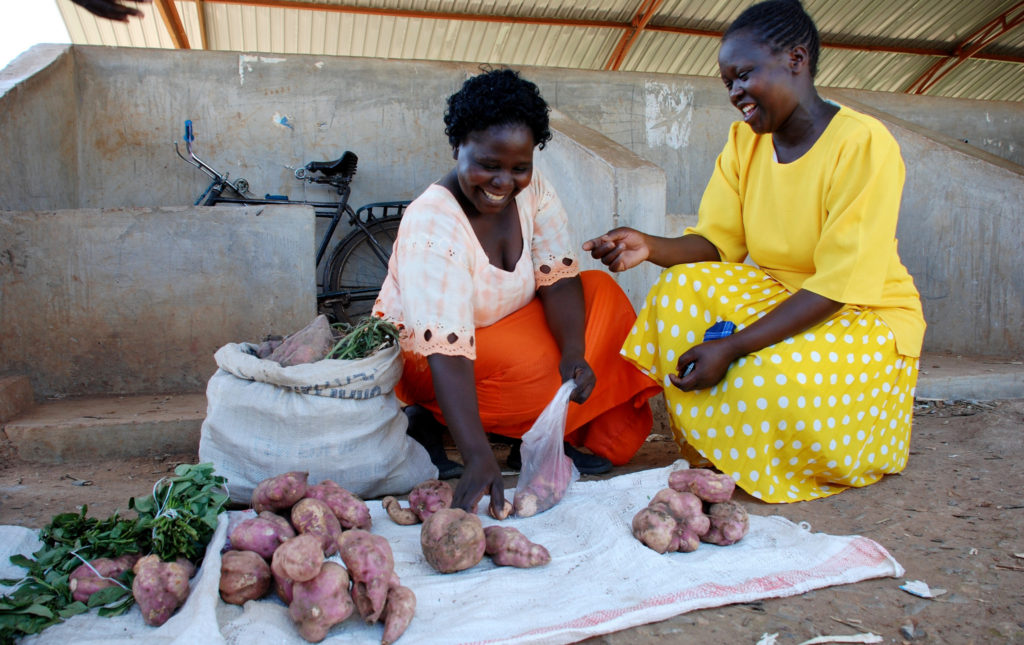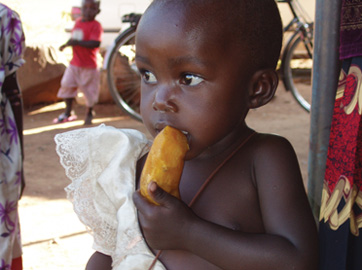Sweetpotato is the eighth most important food crop in developing countries. Total production (110 MT) has historically been centered in Asia with Africa taking an increasing share.

Photo S.Quinn/CIP
Like the potato, sweetpotato (Ipomea batatas) is a major energy crop, and some of its genotypes such as orange fleshed sweetpotato (OFSP) have very high levels of pro-vitamin A, which provides a means to reduce VAD in the tropics and subtropics. Whilst sweetpotato originated in the Americas, no wild form of I. batatas has been found, but domesticated I. batatas was probably selected from an inter-specific cross between diploid and tetraploid species in the I. trifida complex. Major pest and diseases are sweetpotato chlorotic stunt virus and the sweetpotato weevils (Cyclas spp.). The crop has large genetic variation for crop duration, as adaptation, partitioning, and nutrient composition.Breeding has been limited to date, and this needs to be increased to produce optimum combinations of broadly adapted productivity of highly nutritious genotypes and high foliage production for animal feed. Transgenic approaches mainly serve for providing weevil and virus resistance. Marketing and processing of sweetpotato are still limited and require further research. The economic value of products varies with dry matter content and color. Hexaploid hybrids are propagated and distributed as tender cuttings called vines, or storage roots.
